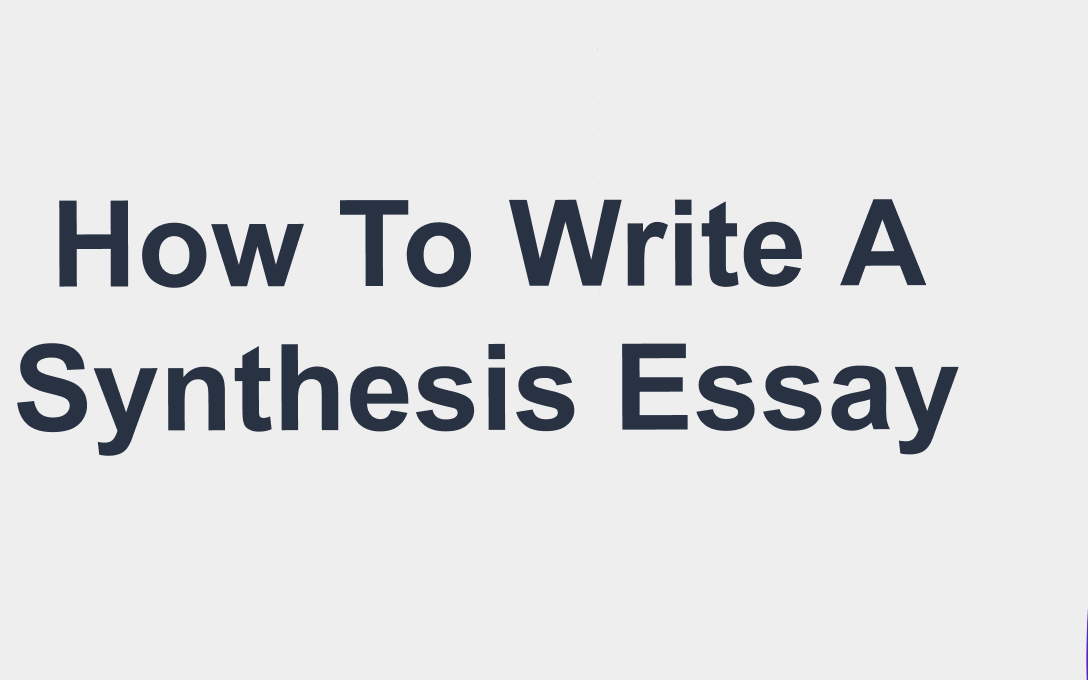How to Write a Synthesis Essay: Examples, Topics, & Outline
Here’s a guide to writing a comprehensive essay, including examples, topics, and outlines. Definition: A synthetic essay is an academic work that combines information from multiple sources to produce a coherent and well-founded argument or perspective on a specific topic. Authors must critically analyze sources, identify common themes and ideas, and integrate them into a […]
To start, you can
Here’s a guide to writing a comprehensive essay, including examples, topics, and outlines.
Definition:
A synthetic essay is an academic work that combines information from multiple sources to produce a coherent and well-founded argument or perspective on a specific topic. Authors must critically analyze sources, identify common themes and ideas, and integrate them into a cohesive point of view. A successful synthetic essay demonstrates the author’s ability to connect different sources and present a balanced and logical argument.
Guide to Writing a Synthesis Essay:
- Understand the Task:
- Read the essay prompt or assignment guidelines carefully to understand the specific requirements.
- Identify the purpose of the synthesis essay, whether it’s to argue a point, evaluate different perspectives, or analyze a topic.
- Choose and Analyze Sources:
- Select relevant and credible sources that provide different perspectives or information on the topic.
- Read and analyze each source critically, identifying key ideas, arguments, and evidence presented.
- Identify Common Themes or Patterns:
- Look for common themes, arguments, or ideas that emerge from the sources.
- Note any contrasting viewpoints or areas of disagreement among the sources.
- Develop a Thesis Statement:
- Based on the analysis of the sources, formulate a clear and concise thesis statement that presents your main argument or perspective.
- Organize Your Essay:
- Develop an outline that outlines the structure and main points of your synthesis essay.
- Typically, a synthesis essay follows a three-part structure: introduction, body paragraphs, and conclusion.
- Introduction:
- Start with a compelling hook to grab the reader’s attention.
- Provide some background information on the topic and its significance.
- Present your thesis statement, indicating your main argument or perspective.
- Body Paragraphs:
- Each body paragraph should focus on a specific subtopic or main point related to your thesis.
- Start each paragraph with a topic sentence that introduces the main idea or argument.
- Support your claims with evidence and examples from the analyzed sources.
- Explain the connections between the sources and how they contribute to your overall argument.
- Use transitional phrases and clear organization to ensure a smooth flow between paragraphs.
- Address Counterarguments:
- Acknowledge and address potential counterarguments or opposing viewpoints.
- Refute counterarguments by providing evidence and logical reasoning to support your position.
- Conclusion:
- Summarize the main points discussed in the body paragraphs, emphasizing the overall argument or perspective.
- Provide a thoughtful and insightful reflection on the topic and its broader implications.
- End with a strong concluding statement that leaves a lasting impact on the reader.
Example Topics:
- The impact of social media on interpersonal relationships.
- The role of technology in education.
- The effects of climate change on global economies.
- The ethical considerations of genetic engineering.
- The influence of mass media on public opinion.
Example Outline:
I. Introduction
- Hook
- Background information on the topic
- Thesis statement presenting your main argument
II. Main Idea/Argument 1
- Topic sentence
- Explanation of the main idea/argument
- Supporting evidence from the sources
III. Main Idea/Argument 2
- Topic sentence
- Explanation of the main idea/argument
- Supporting evidence from the sources
IV. Main Idea/Argument 3
- Topic sentence
- Explanation of the main idea/argument
- Supporting evidence from the sources
V. Addressing Counterarguments
- Acknowledge and refute potential counterarguments
- Provide evidence and reasoning to support your position
VI. Conclusion
- Summary of the main points
- Reflection on the topic and its broader implications
- Concluding statement
Remember to adjust the structure and content of your synthesis essay outline based on the specific requirements of your assignment and the sources you’re working with.
Calculate the price of your order
Select your paper details and see how much our professional writing services will cost.
- Freebies
- Format
- Formatting (MLA, APA, Chicago, custom, etc.)
- Title page & bibliography
- 24/7 customer support
- Amendments to your paper when they are needed
- Chat with your writer
- 275 word/double-spaced page
- 12 point Arial/Times New Roman
- Double, single, and custom spacing
-
We care about originality
Our custom human-written papers from top essay writers are always free from plagiarism.
-
We protect your privacy
Your data and payment info stay secured every time you get our help from an essay writer.
-
You control your money
Your money is safe with us. If your plans change, you can get it sent back to your card.
How it works
-
1
You give us the detailsComplete a brief order form to tell us what kind of paper you need.
-
2
We find you a top writerOne of the best experts in your discipline starts working on your essay.
-
3
You get the paper doneEnjoy writing that meets your demands and high academic standards!
Get your own paper from top experts
Order nowPerks of our essay writing service
We offer more than just hand-crafted papers customized for you. Here are more of our greatest perks.